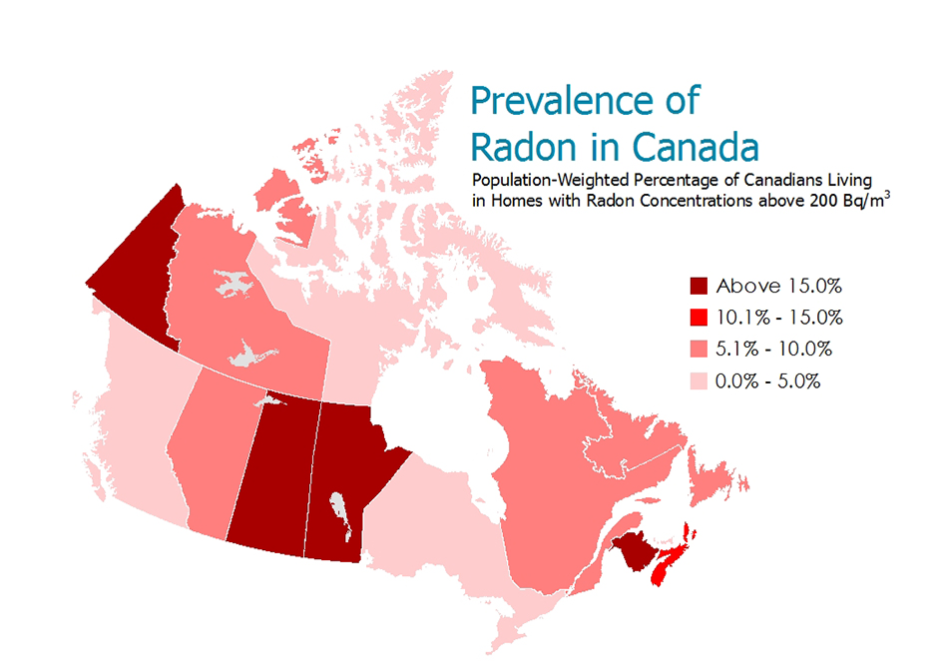Radon is a naturally-occurring colourless, odourless, tasteless gas that is radioactive.
It occurs naturally throughout Canada, however there are some regions where it is more prevalent, such as Manitoba, Saskatchewan, New Brunswick and parts of British Columbia and Quebec.
When present, radon tends to accumulate in enclosed spaces such as homes and buildings. Overall, Health Canada estimates that approximately 7% of homes have high levels of radon.Note1
Radon is the second-leading cause of lung cancer, after smoking, accounting for 16% of lung cancer deaths, or 3,200 deaths in Canada, annually.
Awareness of radon
In 2015, the Households and the Environment Survey found that 55% of all Canadian households indicated that they had heard of radon, up from 45% in 2013. Households in Prince Edward Island (70%), New Brunswick (70%) and Saskatchewan (68%) were most likely to have heard of it, while those in Quebec (49%) and Newfoundland and Labrador (50%) were the least likely.
Of those who had heard of radon, 59% were able to correctly identify what it was when presented with a list of possible descriptions, which is an increase from 53% in 2013. Households in Nova Scotia (69%), New Brunswick (67%) and Quebec (67%) were the most likely to have correctly identified it.
Households in Alberta (36%) and British Columbia (38%) were most likely to have chosen an incorrect description for radon when asked in 2015.



